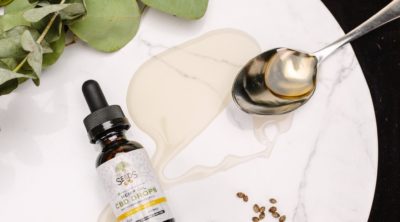
There are several uses and benefits of sterile saline solution. Read this article to know about those uses and how to make your own saline solution.
The main components of a sterile saline solution are sterile water and sodium chloride or salt. It is a very adaptable solution and is used for various medical purposes. As the name suggest, it is used as a sterilizing agent for destroying germs and microorganisms. It can be used both internally as well as externally.
Medicinal Uses of Sterile Saline Solution
Sterile saline solution is widely used as IV fluid for dehydrated patients. In those cases where the patient cannot consume anything due to severe diarrhea or vomiting, it is administered to prevent dehydration. Here, the saline solution is combined with dextrose or glucose and is administered by the means of IV drip. It is also given to patients soon after a surgery. Patients need to fast for several hours before any major surgical operation. So, their body requires water and nutrients as soon as it is over and is supplied by the solution.
Those who tend to suffer from stuffy nose due to sinusitis or allergies can use sterile saline solution for the purpose of nasal irrigation. Unlike the decongestant nasal sprays, one can use a saline nasal spray for a long time without any fear of side effects. When it is poured into a nostril, it will rinse out the mucus build up inside the nasal cavity and clear up the nasal passage and sinus cavities. Traces of allergens like pollen or dander that irritate the nasal cavity and trigger allergies can also be eliminated with the help of nasal irrigation.
Sterile solution is used to disinfect soft contact lenses. Calcium deposits and other debris tend to stick to the surface of contact lenses which need to be cleaned up thoroughly after every use. As the quality of this solution has lots of similarity with that of natural tears, storing the contact lenses in it will keep them in good condition. It is particularly good for people who have sensitive eyes.
There are many other uses of this solution. Those who are undergoing chemotherapy treatment have a port implanted under their skin for administering the medicine. Sterile solution is used for cleansing up the ports after every chemotherapy session. It is also very useful for cleaning up various types of wounds on skin surface. You can also use sterile saline solution for piercings aftercare. Veterinarians also use this solution for diluting antibiotic medicines before administering them to animals like cats, dogs, horse, cattle, etc. It is also used for hydration purpose and washing off wounds on their body.
How to Make Sterile Saline Solution
To prepare this solution at home, you have to procure a few materials. First of all, you have to buy one liter of distilled water. The next important thing needed is non-iodized salt. You can use cooking salt and not table salt but a better option is laboratory grade sodium chloride which is available with a lab supply company. You need a clean glass jar with lid to store the solution, a pair of tongs and two big saucepans for boiling water.
Place the glass jar, its lids and tongs in a saucepan and fill it up with plain tap water in such a way that the handle of the tongs remains out of the water. Place this saucepan on heat and boil for 15 minutes. Then remove it from heat and allow it to cool down.
Next, take the other saucepan, pour the distilled water into it. Then you have to add salt or sodium chloride to it. Normally, the concentration of sodium chloride in a sterile solution should be 0.9 %. So, in one liter of water, you need 9 grams of salt. One teaspoon of salt weighs 5 grams approximately. So, you can add one heaped teaspoonful of salt into the water. Boil this saline solution for 15 minutes. Let it cool down. Pick up the sterilized jar and the lid with the help of the tongs and pour the freshly prepared sterile saline solution into the jar and store it in refrigerator.
Sterile saline solution prepared at home, should be used for the purpose of nasal irrigation and cleaning up of face body piercings, etc. Do not use it on contact lenses. This is because the solution used for contact lenses have some more sterilization components other than salt and water.


